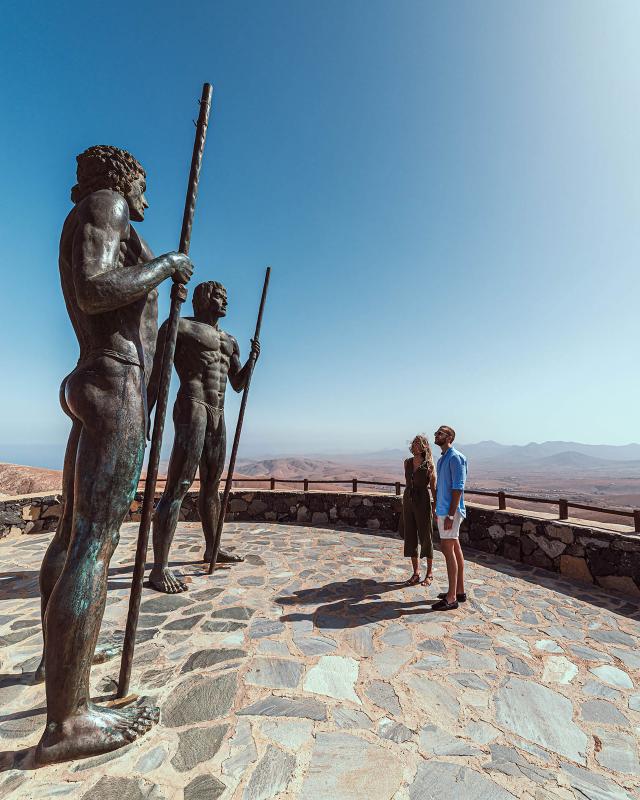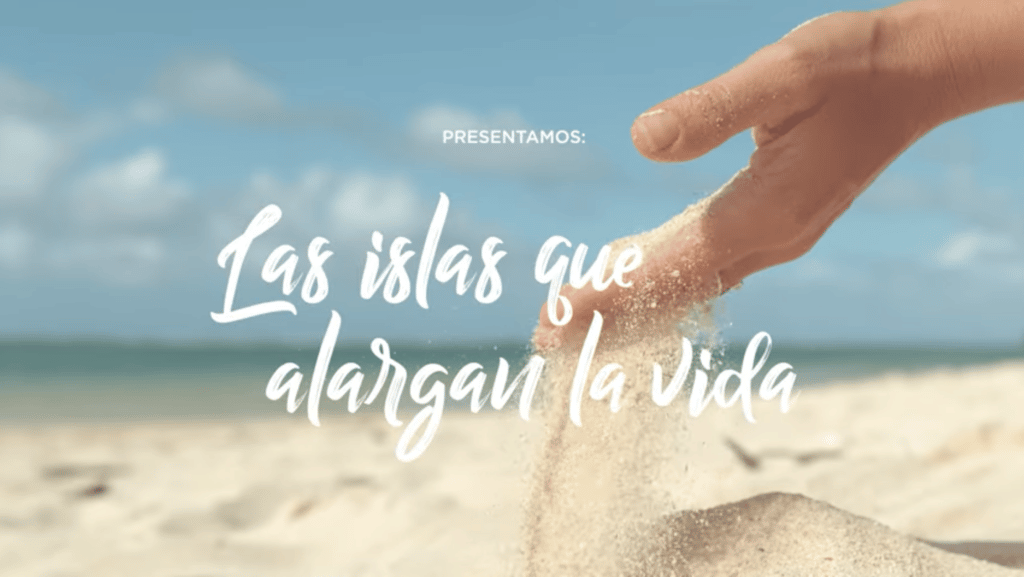An appointment with culture
The island of Fuerteventura is the bearer of a cultural heritage from a past that is both distant and close at the same time, and which survives in every corner of the island.
The engravings, archaeological sites and place names of the ancient inhabitants can be found everywhere.
From the colonial heritage, stately homes, charming churches, hermitages, lighthouses and mills.
From modern times, open-air sculpture parks, art centres, such as the Juan Ismael Art Centre in Puerto del Rosario, theatres and international festivals converge today with the centuries-old cultural events.
Traditions
The pilgrimages, the street markets, the popular festivals perpetuated in all the villages throughout the year or the handicrafts made of fretwork, basketwork and clay, are examples of a tradition that survives to this day.
Museums
The Fuerteventura Museum Network offers the opportunity to travel back in time through a history that brings you closer to the knowledge of the people of Fuerteventura.
Cueva del Llano: It is a 648 m long volcanic lava tube in which the introduction of certain animal species throughout history is analysed. Villaverde, La Oliva.
Archaeological Museum of Betancuria: A journey through the island's aboriginal culture with samples of great archaeological and ethnographic value. Betancuria.
Ecomuseum La Alcogida: A settlement of seven dwellings that constitutes a sample of the traditional habitat of Fuerteventura. Tefía, Puerto del Rosario.
Interpretation centre at the archaeological site of La Atalayita: This is an archaeological site, which was once a settlement of the Mahos, the aborigines of Fuerteventura. Valle del Pozo Negro, Antigua.
Faro del Tostón Fishing Museum: A space dedicated to disseminating the art of Majorero fishing located in a beautiful 19th century lighthouse. El Cotillo, La Oliva.
Salt Museum: It is a cultural complex made up of the Salinas del Carmen, built around 1910, and a museum centre that provides an overview of the culture generated around salt. Salinas del Carmen, Antigua.
Unamuno House Museum: This is the house where the famous writer stayed during his exile on the island and contains various objects and utensils from Unamuno's time on Fuerteventura. Puerto del Rosario.
Los Molinos Interpretation Centre: Located in a traditional house from the last century, it exhibits the materials and methods used to make gofio. Tiscamanita, Tuineje.
Centro de Artesanía Molino de Antigua: It contains expressions of the history of the local peasantry, handicrafts, sculptures and a large gofio mill with its machinery intact. Antigua.
Houses of Felipito: On the slopes of the Guisguey Valley is located this picnic park, a perfect place for barbecues with family or friends. Guisguey, Puerto del Rosario.
Viewpoint of Morro Velosa: Designed by the famous artist César Manrique, it offers a view of the incredible landscape of the central northern part of the island from a unique perspective. Betancuria.
La Cilla Grain Museum: In the Casa de la Cilla, dating from 1819, you can learn about the history of the traditional agricultural cycle, its relationship with the climate and a collection of agricultural implements. La Oliva.
Doctor Mena House Museum: Home of Dr. Mena, it has been converted into a museum and is decorated with elements of a well-to-do rural house. Ampuyenta, Puerto del Rosario.
Gastronomy
Fuerteventura's dishes taste of salt, sea and the shepherding of the Majorero goats.
The popular kid and goat meat, fish in all its forms, the traditional gofio and potatoes, wrinkled or boiled, are present in every meal.
Queso Majorero, with designation of origin since 1996, is the first goat's cheese to obtain the designation of origin in the whole of Spain. Cured, semi-cured or soft; natural, with gofio, paprika or oil, it is, without doubt, the delicacy of the Maxorata, a fact that has been recognised with countless international awards.
A remote start...
The birth of Fuerteventura dates back more than 30 million years, with the beginning of the eruptions that built the submarine foundations of the island, which began to emerge to the surface 23 million years ago. Since then, prolonged volcanic processes and the erosion produced by the incessant trade winds, have resulted in the picture we can admire today.
The origins of the first settlers of Fuerteventura have always been dotted with legends, due to the scarce literature that has been preserved on the subject. The different theories place the arrival of the first inhabitants between 1,000 and 300 BC, but there are still diverse positions and much uncertainty. The most recent studies point to the Berber roots of the Mahos, the name given to the aborigines of Fuerteventura. An extensive legacy of Lybo-Berber inscriptions and engravings scattered all over the island are the main clue that supports the belief of an origin from the neighbouring African continent.
Lhe conquest
The island was conquered and colonised by Juan de Bethencourt, an entrepreneur of Norman origin, and Gadifer de la Salle in the early 15th century. In 1404 they established their first settlement in the most protected area of the whole island, naming it Betancuria in honour of its founder. Today, this area in the centre of Fuerteventura, which was then the first capital of the Canary Islands, is one of the most beautiful places in the island's geography and has one of the longest histories behind it.
In 1405, after the surrender of Guize and Ayose, the aboriginal kings who governed the two kingdoms into which the island was divided at that time, known as Maxorata and Jandía, the process of conquering Fuerteventura came to an end.
From the 15th to the 19th century, the island of Fuerteventura was a lordship dependent on the Catholic Monarchs, until it became part of the Spanish province of the Canary Islands.













